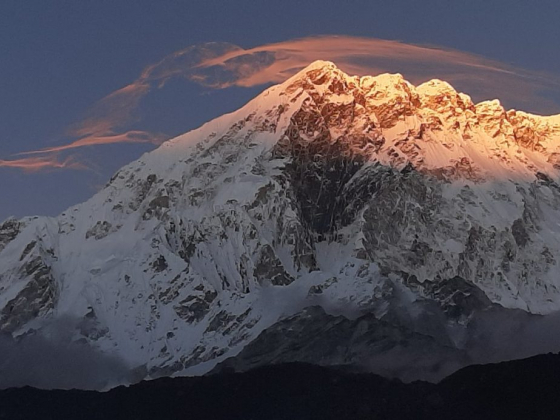
Although people visit Nepal for several reasons, including cultural and religious celebrations, spiritual healing, sacred and heritage sites, mountaineering, and wildlife watching, most tourists come for trekking.
With its spectacular mountains, including the world’s highest peak, offering spectacular views and trails ranging from the gentle to the extremely challenging, Nepal offers a trekking experience like no other. Its most popular trekking routes are some of the most epic – Everest Base Camp, the Annapurnas, and the Manaslu Trek, to name just three. This, along with the warm hospitality and friendliness of the people, ancient culture, and astounding flora and fauna, mean trekkers often return again and again.
This article highlights 10 of the best treks among the many.

Everest Base Camp trek is one of the most popular in Nepal. It provides an insight into the lives of the Sherpa mountain people and takes you to the foot of the world’s highest mountain, Mount Everest. The best months to do this trek are March/ April/ May and October/ November when the weather is perfect and the mountains clear. It is also not so cold during the daytime (around 18-20 degrees centigrade at lower altitudes).
The highest point on this trek is 5,364m (17,598 ft) at Kala Pattar, considered the best viewpoint to see There are no restrictions in having to book your trip through a trekking agency. But it is always better to have a guide or porter with you in case of any problems, and with their knowledge of the area and mountains, they can add to your overall experience. Accommodation is teahouses on this route.
Although there are some luxury lodges at lower altitudes – if you have the budget.
A Sagarmatha National Park Entrance Permit is required at USD $30, and a Khumbu Pasang Lhamu Gaupalika Permit at approx. USD 20 per person.
The first thrill is flying into Lukla in the Everest Region. It all starts from here! The first day improves as you hike to the first overnight stop at Phakding. The second day takes you into the main market town of the region – Namche Bazaar. This is a traditional market town and is now the starting point for many treks and mountaineering expeditions. Filled with trekkers and climbers, the atmosphere here is vibrant and welcoming. With a day to acclimate, there is every opportunity to meet the locals and learn more about Sherpa's heritage before pushing off into the wilderness.
This trek offers a full array of mountain vistas, glaciers lying before you, stunning landscapes ranging from forests to snow and ice, and monasteries with the most amazing panoramic scenery. Tengboche Monastery is the highest monastery in the region, and there is an opportunity to light a few prayer lamps and interact with the monks. Heading onwards and upwards, the trail takes you to Kala Pattar, the highest point on this trek. You can almost touch Everest from here; the views are outstandingly awesome! Everest Base Camp is, of course, very exciting to visit and the center of this trek, but truthfully the views of Everest are best from Kala Pattar.
Side note: For those who would rather not trek but want to see the base camp, Kala Pattar and Everest, it is possible to take a helicopter from Kathmandu and land briefly at these sites. Not inexpensive by any means, but in half a day, you get to see the best of what the trekkers see in their 14 days of hard trekking.
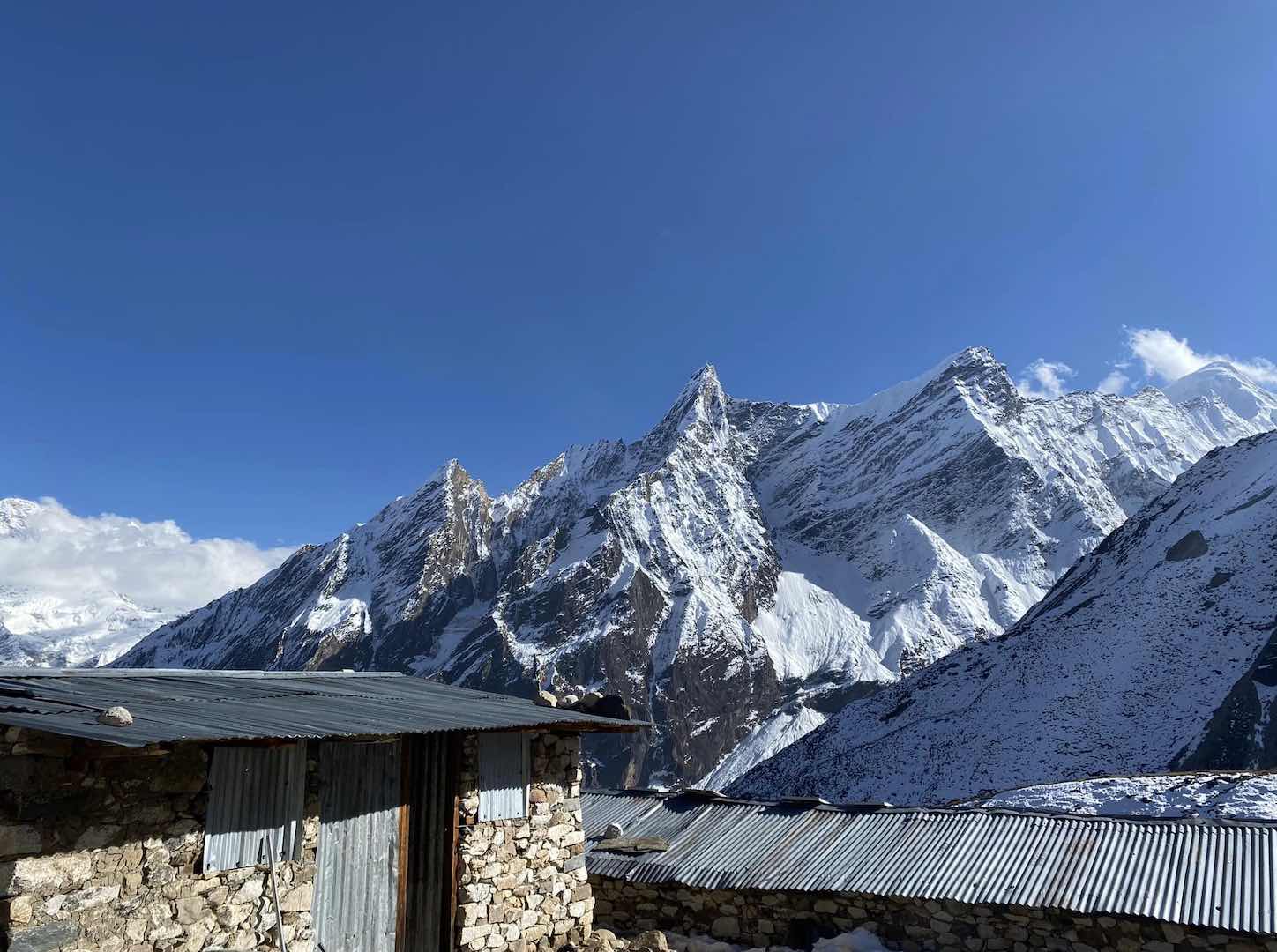
Manaslu Circuit trek is best done in March/ April/ May or September to December. Keep in mind that in November and December, many teahouses may be closed for the winter. Being a restricted area, you need to book this trek through a trekking agency and go with a registered, trained guide. A Restricted Area Permit and a Manaslu Conservation Area Permit are required for this remote area trek. However, there are teahouses, and many people camp in this remote area. You can discuss this with your agent.
Manaslu is Nepal’s eighth-highest mountain, set in a restricted area in the Manaslu Conservation Area. One added advantage of its remoteness is that this trek sees far fewer trekkers than other treks. On the other side, it is a very challenging trek, with very basic accommodation – where there is accommodation.
You will witness many mountains – the Annapurna range in the west, Ganesh Himal in the east, and a glacial cirque created by other stunning mountains. Hiking over the Larky La Pass at 5,167m is an exhilarating if exhausting, experience. Setting out before sunrise, most likely in mic-crampons, your reward is staring over to the very close Tibet border and taking in the majestic mountains. Being a conservation area, you would expect to see great wildlife. Some of the animals in this region are the rare Himalayan Blue Sheep, Himalayan Tahr (a type of wild goat), Snow Leopard (if you are very lucky), and smaller mammals.
The people in this region are mainly Buddhist, and that is obvious by the prayer flags, prayer walls (known as mani walls), stupas, and gompas along the way. Visiting the villages, you can see that the people and culture are Tibetan inspired from their language to their clothes and daily practices.
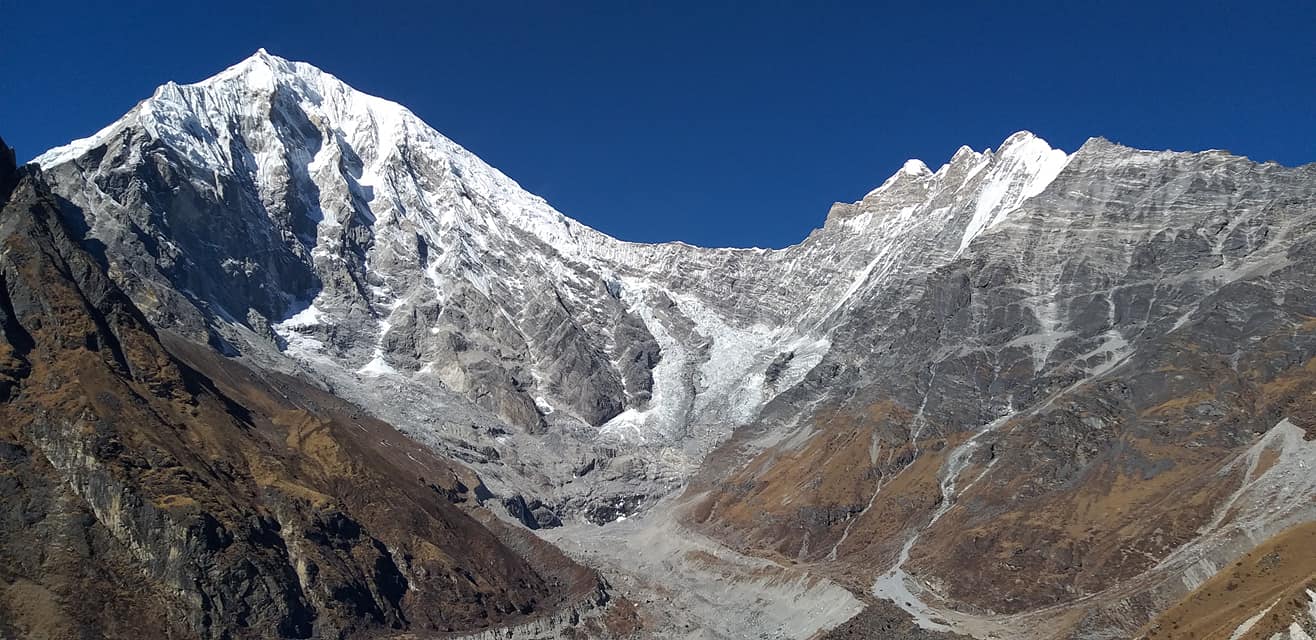
This eight-day trek is very close to Kathmandu, so there is no need to take a domestic flight. This certainly reduces the cost of the trip. By bus or private vehicle, it takes around seven hours to reach the starting point of the trek. The highest altitude on this trek is 3,800m making it less likely to have any altitude-related problems. The best time to visit is March / April / May and October/November.
There are teahouses on the trek for accommodation and food but do note that in some areas, the teahouses may be closed or not available, so be prepared with plenty of water and food just in case. No permits are required, and it is not restricted, but it is still wise to take a guide or porter with you in case of accommodation difficulties or other problems.
Set in Langtang National Park, the trail takes you through pine forests, pastures, meadows, and villages with an interesting culture. Since it is in a national park, wildlife spotting is possible. This is also home to the Snow Leopard, Red Panda, Ghoral, and around 250 species of birds (bring your binoculars!). Langtang Valley is also known as the Valley of Glaciers. The mountains on wonderful display are Langtang Ri, Langtang, Langsisa, and Ganjala Peak. One of the highlights is climbing Tserko Ri at 5,000m to witness sunrise over the snow-capped mountains.
This, again, is a Buddhist area, with Langtang Gompa and Kyanjing Gompa being just two of the monasteries in the area. Meeting with locals will give you a feel for Buddhist culture and lifestyle. The 2015 earthquake destroyed Langtang Village, which has relocated to a new area, leaving the valley a very eerie place to visit. Which simply adds to the atmosphere of adventure.
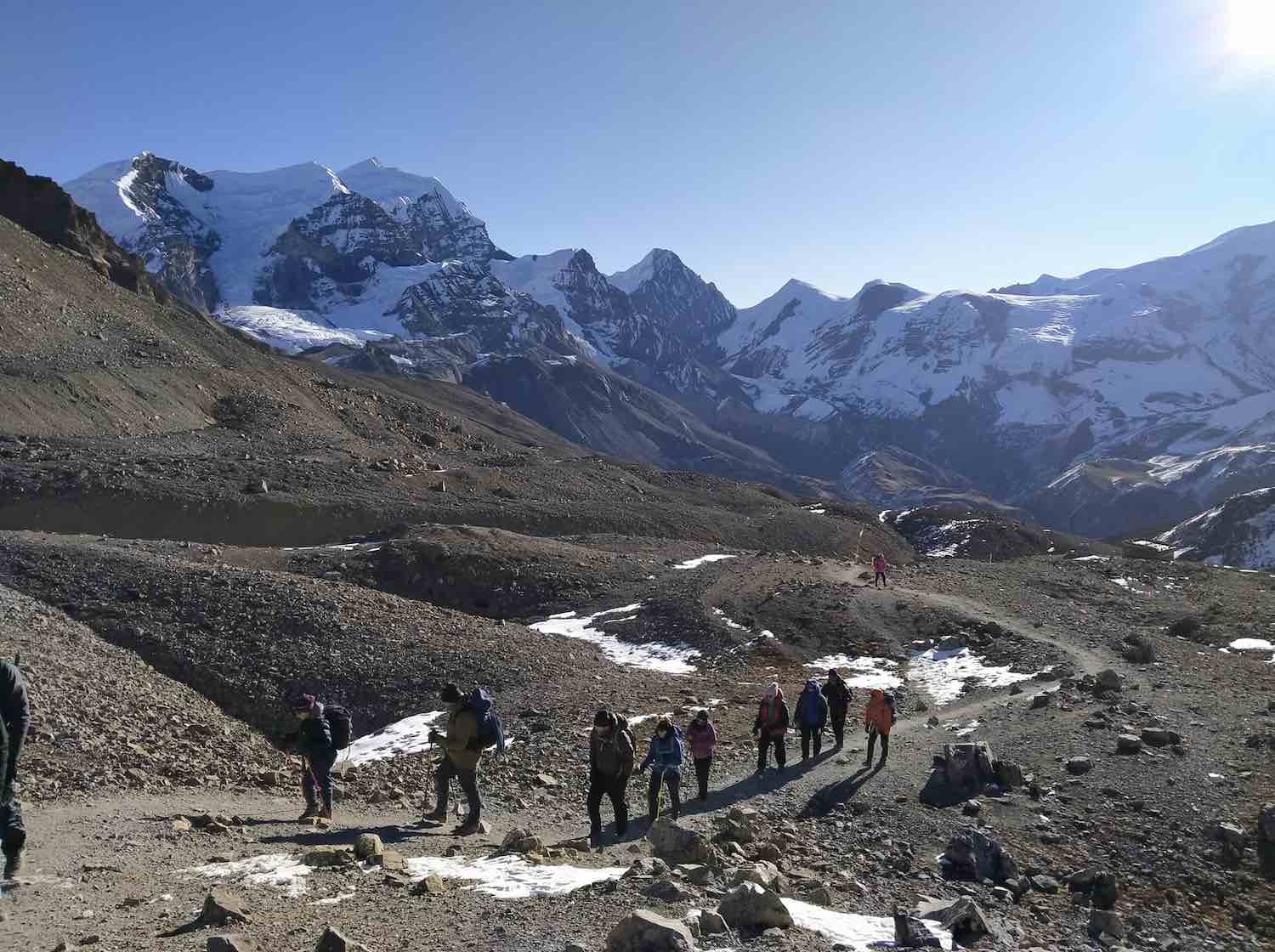
This 15-day trek is one of the most popular in Nepal and the best time to go is March to May and October to November. It’s based in the Annapurna Conservation Area, so a permit is required. There are plenty of teahouses along this popular route of various standards. Its popularity has drawbacks: in peak season, accommodation may be hard to come by, and you will unlikely get a single room. Road construction is going on to make it easier for those who cannot trek to enter the region and the many Hindu pilgrims, benefiting the locals who can transport their goods more easily.
The trek starts in Manang District, a seven-hour drive from Kathmandu, and ends in Pokhara via Mustang District. These two districts have some of the best mountain views in the country. In brief, the landscape on this trek varies from subtropical forests, rice fields, ice flows, high mountain passes, arid cliffs, mountain views, and the world’s deepest river gorge. On the Manang side, the culture is mostly Buddhist but crossing the Thorong La Pass into Mustang, the first place you visit is Muktinath, a very important Hindu pilgrimage site.
Crossing the Thorong La Pass is one of the highlights of this trek. At almost 4,000m the pass can be tricky if there is snow, but it has wonderful views of the Annapurna Massif, Dhaulagiri, Tilicho Peak, and Manaslu. There are many extremely interesting villages on the Mustang side, including the village of Kagbeni with its covered streets, and Marpha, in the heart of the apple-growing country. Marpha also has a small interesting monastery, cobbled streets, and some tasty Apple Brandy!
Moving along the trail, there is Poon Hill, with over 20 mountains on show. This is spectacular at dawn, with sunrise coloring the mountains. Many people make the Poon Hill Trek independent of the longer routes, so it is always a busy hill in the early morning. Another attraction is Tatopani's natural hot springs, which draw trekkers, hikers, and pilgrims alike. Ending in Pokhara, a few days can be enjoyed there, soaking up nightlife or lazing by the tranquil lake. Whatever you prefer.
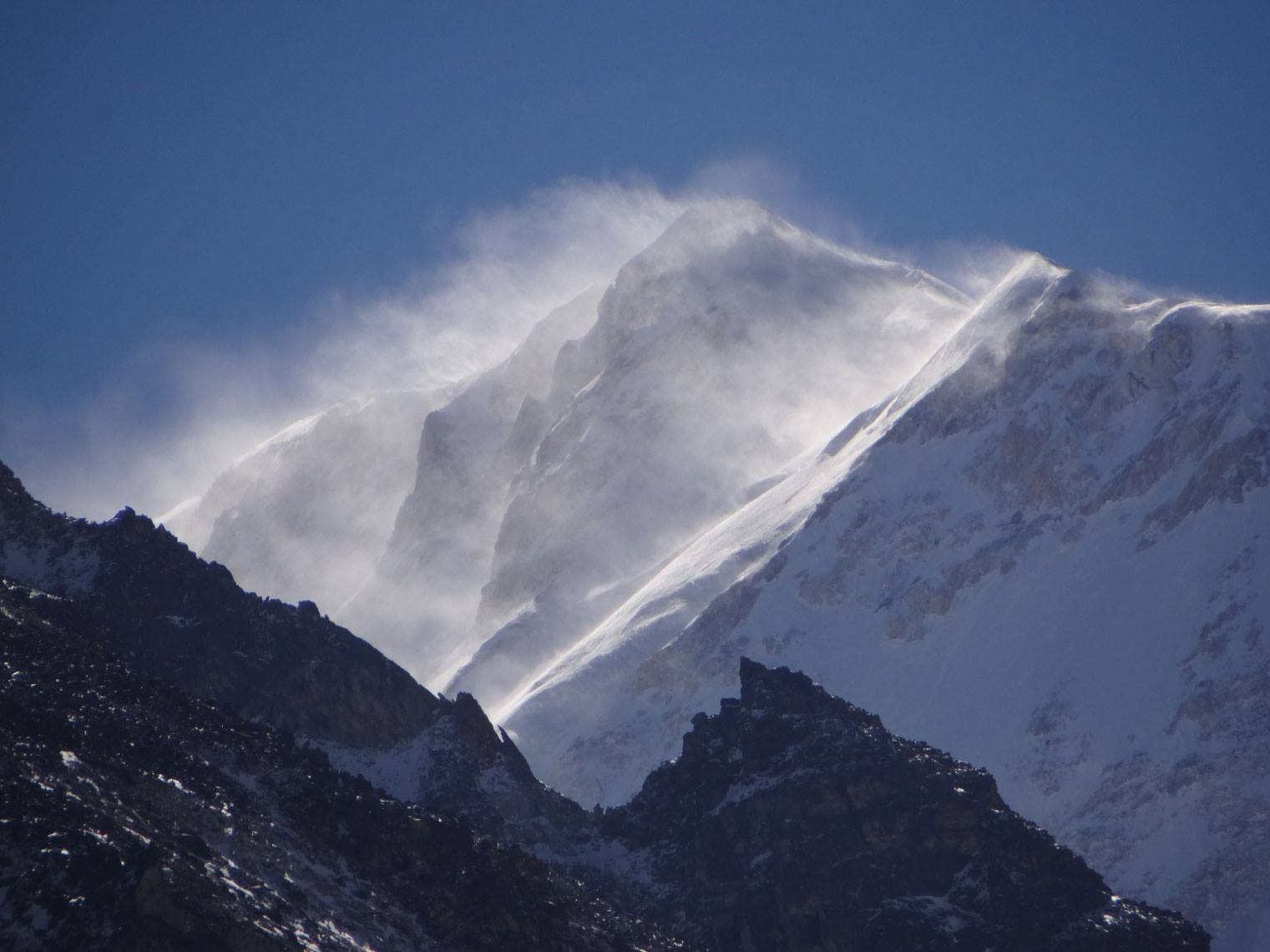
This is a 21-day camping trek which is a bit of a challenge and probably not the best for beginners. However, for those with plenty of fitness and previous hiking experience, this is a wonderful trek through a restricted conservation area in eastern Nepal. As a result, you must trek with a registered, licensed guide and purchase a Restricted Area Permit and a TACAP before leaving Kathmandu.
This trek is remote, and there will likely be a few other trekking groups on the trail. It begins with a flight to the eastern part of Nepal, then by road through tea plantations to Taplejung, where the trek begins. At lower altitudes, there are cultivated fields and villages of Gurung, Rai, and Limbu peoples as you rise higher. There is much to learn about Buddhist culture with visits to Ramtang and Oktang monasteries. As this is a conservation area, there are good chances of spotting wildlife. Perhaps even the beautiful Snow Leopard. Much of flora and fauna in this area is unique and quite untouched. Some landscape sights are waterfalls, rhododendron, pine and birch forests, and the Yalung Glacier.
Kanchenjunga is the highest mountain in the area and the third highest in the world at 8,586m. Other mountains you will see are Makalu, Everest, and Lhotse, as well as a host more. One of the trek's highlights is crossing over 4,000m, such as Mir-gin La Pass, Sele La Pass, and Sinon La Pass. As I said, this is a challenging trek. Other attractions include the base camp of Oktang and Pangpema.
Now that this area has been added to the Great Himalayan Trek, it will likely become more popular as people know about it. A few teahouses had opened up pre-COVID with high expectations of increasing visitors. But as of autumn 2022, it's unknown whether they have reopened. In any case, most of the trail has no accommodation except for your tent.
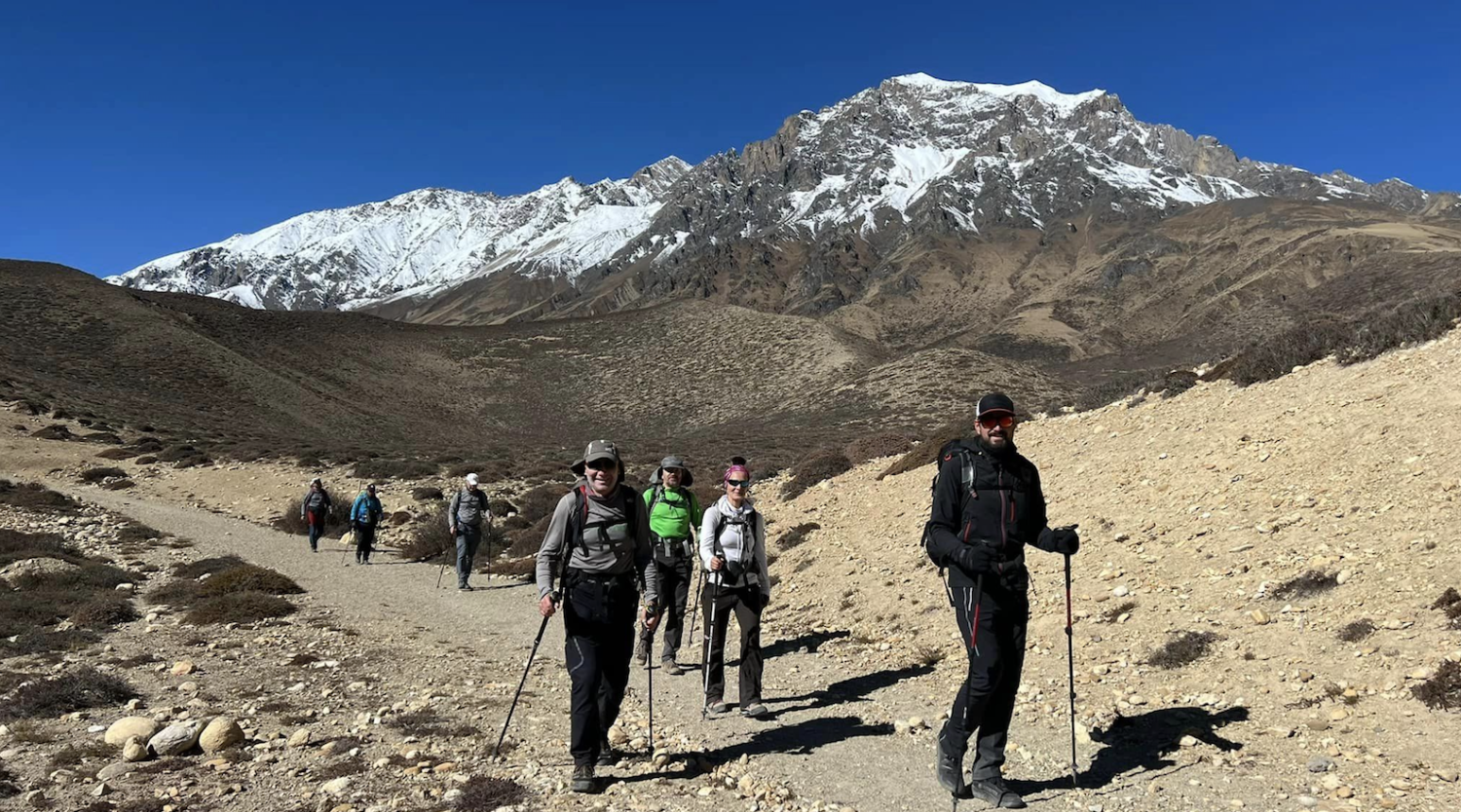
This 14-day trek takes you into a unique, almost lunar landscape in the Kingdom of Lo restricted area. Since it is restricted, trekkers require a Restricted Area Permit and an Annapurna Conservation Area Permit. You cannot do this trek alone but must book and travel with a registered trekking agency. This is a moderate trek that does not exceed 3,800m in altitude. But a generally good fitness level is required for any trekking in Nepal. The best time to visit is March to December, although, in late November and December, many teahouses may be closed as the local people head out of the mountains for winter. Otherwise, this trek has plenty of good teahouses for accommodation and food.
Starting from Pokhara, a short flight takes you into the market town of Jomson in the lower Mustang. From there, you start trekking and cross into Upper Mustang the following day. Upper Mustang was only opened for trekkers in 1992, so it is exciting to see how the locals live in their interesting villages, with their fields walled in against the wind prevalent in this area. It is still possible to see a mule caravan on what was once a very busy salt caravan trail. One of the highlights of this trek is visiting the walled city of Lo-Manthang. Home to the past kings of Lo, there has been no king since Nepal became a republic in the 2000s. The palace still stands, making a very interesting backdrop to the many festivals and masked dances there. Another interesting feature of this trek is a visit to the Chooser Caves. Many caves are carved very high up into the cliffs. No one knows what they were for, but it is thought perhaps to be for burial chambers, monasteries, meditation retreats, etc.
Naturally, as you are in the heart of the Annapurna Mountain Range, there are plenty of mountains to see, including Dhaulagiri, Nilgiri, and Annapurna.
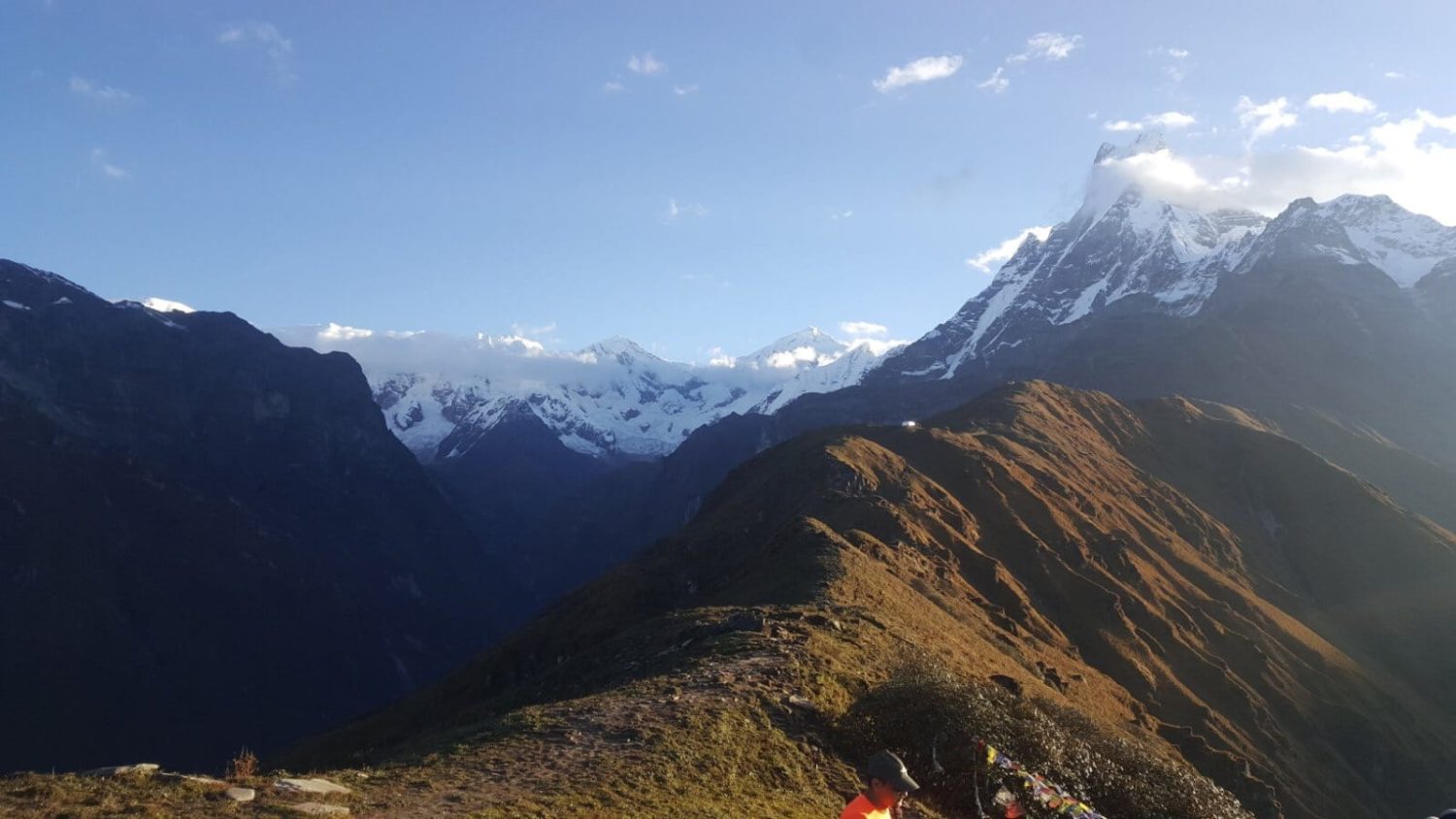
This seven-day trek is perfect for those with less time for trekking but still want to go to a more unique and remote area. Situated near Pokhara, the best time to do this trek is March to May and September to December. An Annapurna Conservation Permit is required for this moderate trek. The highest point is 4,450m at Mardi Himal Base Camp. Otherwise, it is a relatively low trek at around 3,000m, of moderate trekking level. Although it is a newly opened trekking area and still less busy than other Annapurna treks, there is a good range of teahouses and lodges.
Starting at Pokhara, there is a half-day drive to the start of this trek. Hiking through lush farmlands and tranquil villages, the vegetation consists of rhododendron forests, pine and oak forests, and peaceful valleys. Passing above the treeline, the trails become more rugged, but the views of the mountains are glorious. The mountains on view are Mardi Himal, Machhapucchre (also known as Fish Tail), Hiunchuli, and the Annapurna and Manaslu ranges. It is never very cold on this trek, and the sun can be strong during the daytime, so dress accordingly. This is becoming a popular trek because of its newness (it opened in 2012) and its ease of access, so it would be a great time to go now.

This extremely interesting 18-day teahouse trek takes trekkers into less explored areas of the Annapurnas. A Restricted Area Permit and Annapurna Conservation Area Permit is required for this trek in a restricted area. It is also not possible to trek here without going through a registered agency and taking a professional, certified guide.
Situated just off the main Annapurna Circuit Trek, this trek takes hikers through Tibetan-like villages and Buddhist Gompas to meet local people whose lives are highly influenced by Tibetan and Buddhist culture. The trek starts in the Manang district, and when you cross over the Marshyandi River, you enter the Nar Phu Valley with its very different topography. Farmers live as they always have, growing barley, buckwheat, and vegetables. Yaks and sheep are raised here too. Leaving the Valley, there is a hard climb over the Thorong La Pass (5,416m) to rejoin the Annapurna Circuit trail in the Mustang district. The first stop is Muktinath, where Buddhism gives way to Hinduism at the Muktinath Temple, with its eternal flame and 108 water spouts.
Along the trail, the wonderful Annapurna mountains accompany you, including three of the largest mountains in this area, Manaslu, Dhaulagiri, and Annapurna. You are in the heart of the mountains on this trek, with the towering, snow-capped giants providing you with stunning views the whole time. Heading down the trail, you reach the very interesting village of Kagbeni and on to the market town of Jomson, where it is possible to catch a flight or bus back to Pokhara. This trek certainly provides both an insight into traditional ways of life in the Nar Phu Valley and the best of the Annapurna trek trails in one very interesting trek. It is also possible to prolong this trek by hiking down from Jomson for a few days. Stopping perhaps at the heart of apple growing in Marpha or climbing up to Poon Hill for amazing sunrise views of the Himalayas before taking a bus back to Pokhara.
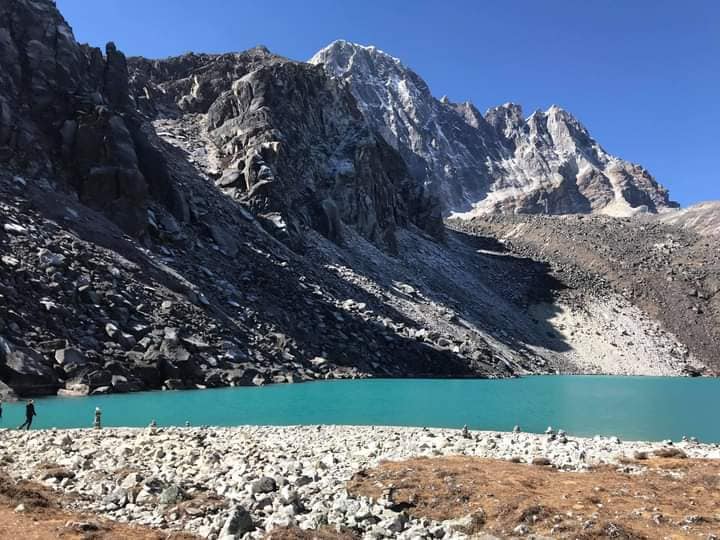
This 12-day trek in the Everest Region takes you to magnificent high-altitude lakes that you don’t see on the Everest Base Camp Trek. The best times to do this trek are from March to May and October to November. You need a Sagarmatha National Park Entry Permit and a Khumbu Pasang Lhamu Rural Municipality Entrance Permit for this trek. There are plenty of teahouses on these trails for accommodation and food, and some are luxurious in Namche and Lukla – if you want to splash out.
The highlight of this trek is the freshwater Gokyo Lakes. These are so unique that they are now Ramsar Site, a wetland of international significance. In total, there are six lakes that all fall under Gokyo Lake's name. Other interesting things to see are the glaciers and mountains. Mount Everest is on the show, as are Makalu, Lhotse, and Cho Oyu.
The trek starts with a flight into the high-altitude airport at Lukla and takes you to the well-known market town and expedition starting place of Namche Bazaar. Because of the high altitude, you need to take an acclimatization day at Namche, giving you time to meet the local Sherpa people and explore the hospital and school Edmund Hillary set up as a thank you to them.
Once you get to the lakes, there is also a hike up Gokyo Ri for the panorama of mountains offered there. Lakes and glaciers are also on show. This is a high-altitude trek as Gokyo Ri is 5,357m, and care must be taken regarding altitude-related problems. But taking it slow and keeping hydrated is the key. This stunning trek also takes you through forests, villages, and villages and introduces you to the Everest Region and the Sagarmatha National Park, with the added interest of the lakes.
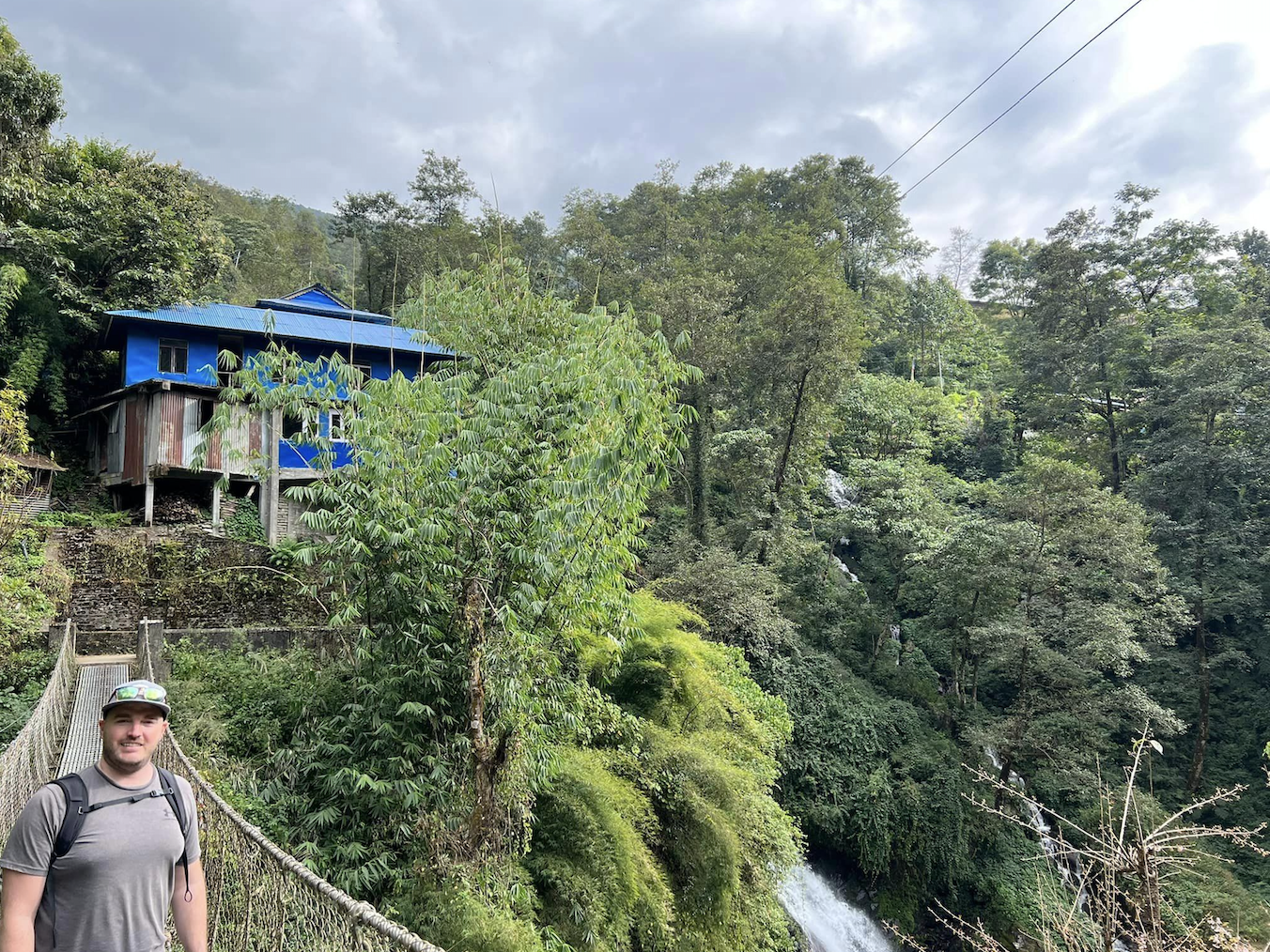
This trek can be tailored to your time and ability, from three to seven days. It is a trek that is known as accessible to almost everyone. Although remember, it still has some tough parts to it. It is a low-altitude trek with a maximum height of 2,875m. An Annapurna Conservation Area Permit is required. There are plenty of teahouses on the route. The best time to come is spring and autumn, but it is also possible throughout the year.
The trek starts and ends at Pokhara. It takes around 45 minutes to drive from Pokhara to the starting point at Nayapul. Then you hike through rhododendron forests, red with blooms in the spring, and Gurung and Tamang villages. One of those tougher points on the trail is hundreds of stone steps at Ulleri village. Reaching the village of Ghorepani, everyone overnights here and gets up before sunrise.
From the easier to the challenging, we have 10 of the best treks in Nepal. There is surely one to fit your time, stamina, and budget. Will you be one of the many people that come back time and time again to trek in the wonderful landscapes of this amazing country?
Advertising disclosure: We may receive compensation for some of the links in our stories. Thank you for supporting LA Weekly and our advertisers.